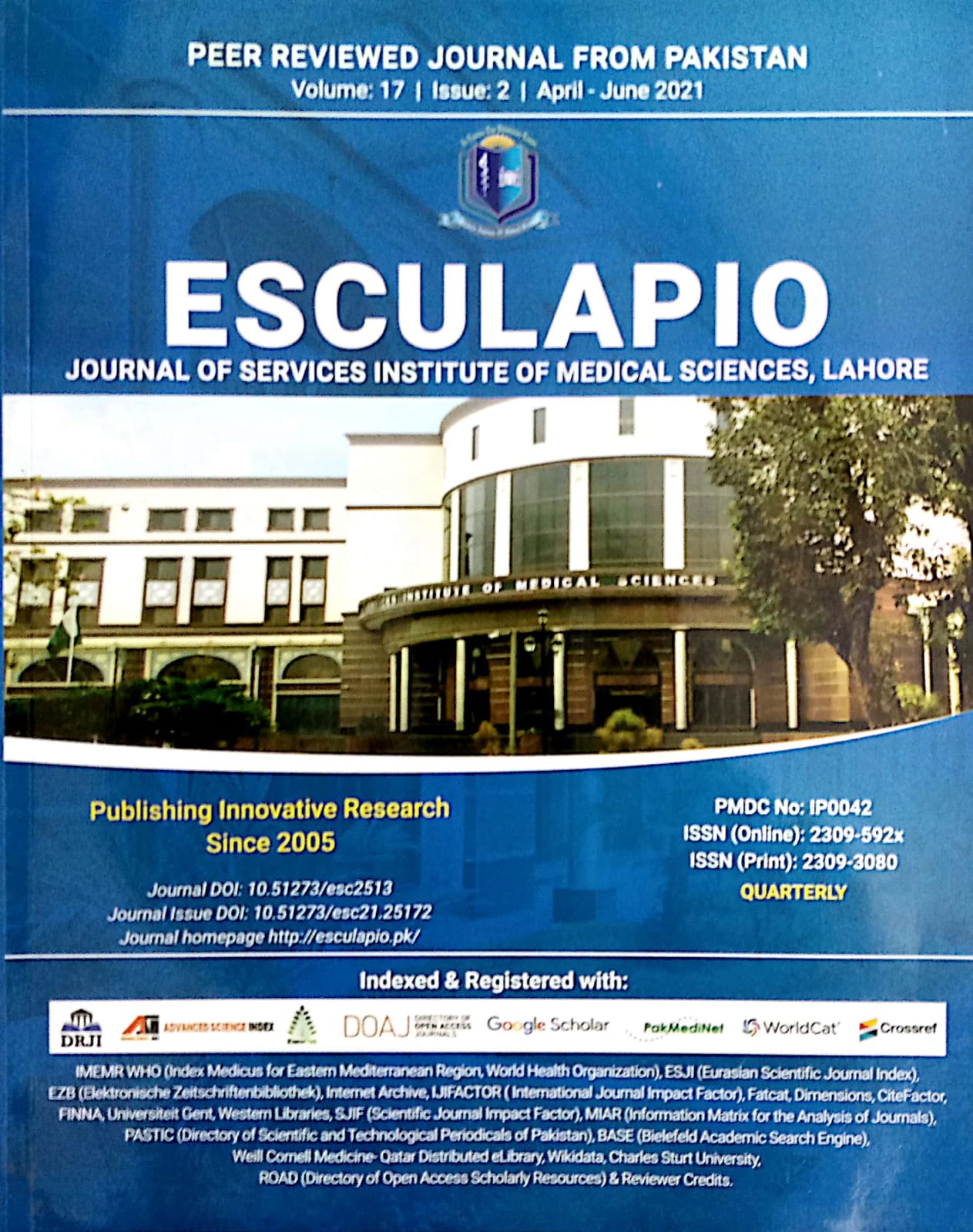Clinical Spectrum and Risk Factors of Penile Fracture in a Tertiary Care Hospital, Pakistan
DOI:
https://doi.org/10.51273/esc21.251728Keywords:
Penile fracture, corporal injury, urethral injury, eggplant plant deformity, detumescence, rolling signAbstract
Objective: To determine the clinical spectrum, operative findings, and determination of potential risk factors responsible for penile fracture.
Methods: A prospective, cross-sectional, observational study was done in the Department of Urology, Services Hospital Lahore. Study duration was two and half years from January 2018 to June 2020. A total of 18 patients were enrolled in study. Informed written consent was obtained from patients. Detail history, demographic data, presentation, risk factors and operative findings were recorded. No invasive investigations were done as the diagnosis was made clinically. Surgical repair was done in all patients.
Results: Patients age was 25-56 years (mean 33.78.6). All patients were married 18(100%). Majority of patients (61.1%) belonged to rural versus 7(38.9%) urban area. Mean time to present in urology was 7 hours +5.5(range 2-24). Few 3(16.7%) went to general practitioner before urologist. 50% (9) reported heard a snap. Unilateral versus bilateral corporal injury was observed in 10 (55.6%) and 8(44.4%) respectively. Midcorporal injury was observed in 6(33.3%), shaft in 4 (22.2%) and root of penis in 3 (16.7%). Urethral injury was reported in 4 (22.2%). Half of patients had eggplant deformity. Rolling sign was positive in 10(55.6%) followed by detumescence post-coitus (72.2%) of patients. Missionary style sex was common 12(66.6%) and
one (5.6%) did not disclose information. 2(11.1%). penile fractures were due to masturbation and 3(16.7%) forceful blows to erect penis. Early presentation was in 14 (77.8%) varuses late in 3 (16.7%). 4 (22.2%) had delay due to behaviour. 10(55.6%) patients lived near to Hospital while 8(44.4%) lived far away. No use of medication for erectile dysfunction was reported. Mostly patients were middle -income class 6(33.3), low 10(55.6%) and 2(11.1%) higher income. 13 patients (72.2%) presented during summer as compared to 1(5.6%) in winter.
Conclusion: Missionary position was the most precarious position observed. The unilateral and midcorporal injury was the most common operative finding.
How to cite: Ghous G., Bano S., Shahjehan., Mahmood A., Ali A., Sharif I., Anwar S.M. Clinical Spectrum and Risk Factors of Penile Fracture in a Tertiary Care Hospital, Pakistan. Esculapio 2021;17(02):










